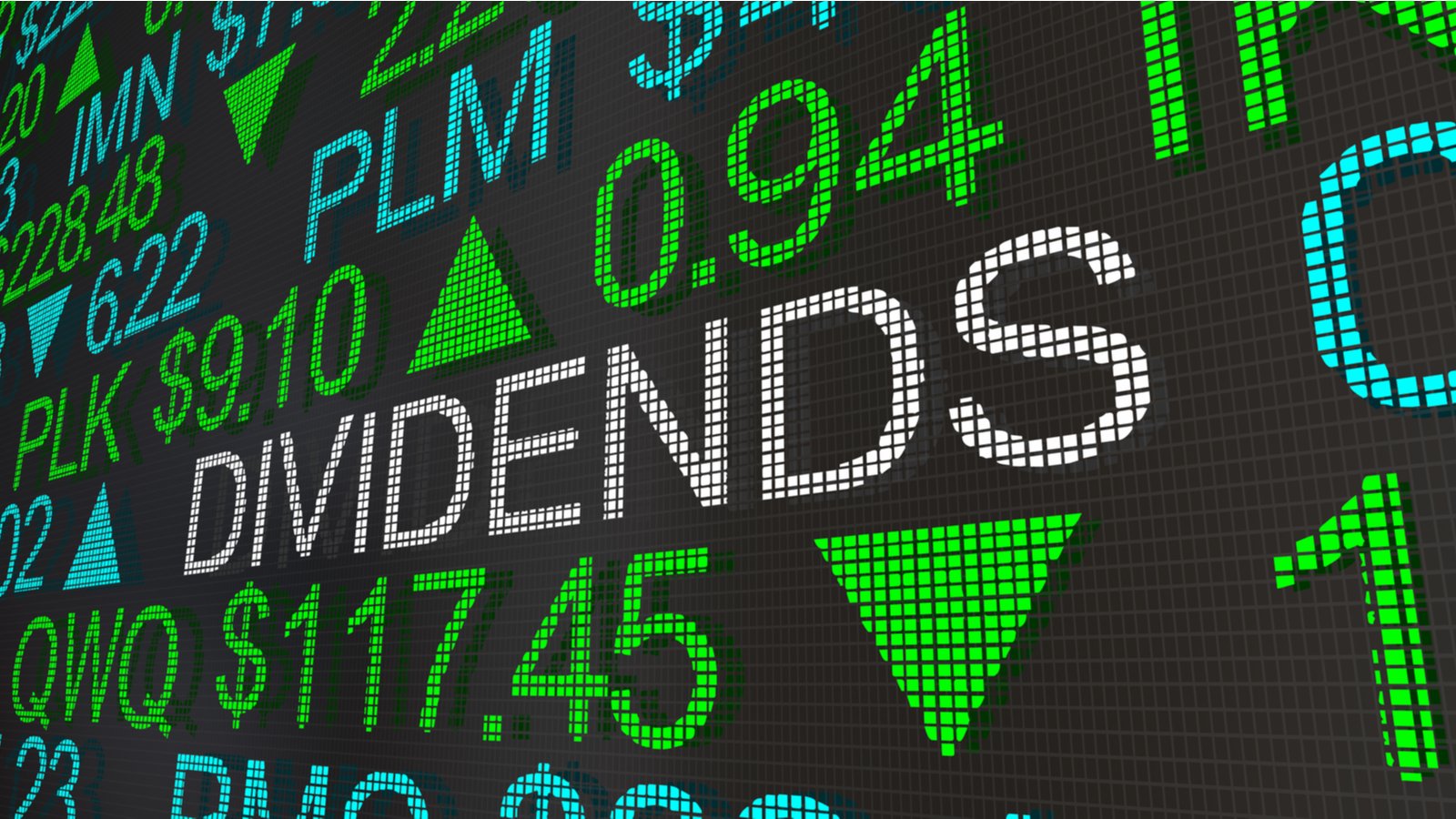It’s dangerous to buy dividend stocks solely for their high yields. Even a cursory look at recent performance shows the risk.
Widely-held names like IBM (NYSE:IBM), AT&T (NYSE:T), and Altria (NYSE:MO) for years have seemed attractive due to dividend yields that often cleared 5%. All three stocks have seen steady declines for years now.
To be fair, investors in IBM and T have scratched out modest gains including dividends over the past five years. But total returns of roughly 1% annualized for IBM and 2% for T are hardly what investors are looking for. MO shareholders, even with dividends, have seen their investments shrink. The S&P 500, meanwhile, has generated total returns of 89%.
The issue with high-yield dividend stocks is that the yields almost always are high for a good reason. IBM, AT&T, and Altria all faced (and still face) significant long-term challenges. Categories like retail REITs (real estate investment trusts) and energy feature many stocks with high yields, sometimes above 10%. In those sectors, the market is pricing in a high likelihood of declining profits.
Certainly, an investor can argue that the market is wrong, that crude prices will rally back or brick-and-mortar retail will be more resilient than most believe. But those arguments should not, and cannot, center solely on the single metric of dividend yield.
Those risks, of course, don’t mean that investors should write off high-yield dividend stocks entirely. They simply need to be careful. Most importantly, there needs to be a bull case beyond the yield.
For these four dividend stocks that yield more than 5%, such a bull case exists:
4 Dividend Stocks: AbbVie (ABBV)

Large-cap pharma has not been a great area for investors in recent years. Dividends mostly have held up, but price appreciation generally has been minimal at best.
It’s not terribly difficult to see why. Pressure on pricing worldwide is a risk. More importantly, the industry has struggled to develop the massive blockbusters – think Viagra for Pfizer (NYSE:PFE) – that drove growth in the past.
ABBV stock hasn’t been immune to those issues, with total three-year price appreciation of just 3%. But there is enough here to suggest that a 5.3% yield is safe, and some possible catalysts that could get the stock out of its recent funk.
Notably, last month’s third-quarter release impressed investors and helped spark a recent rally. Adjusted earnings per share actually grew more than 20% year-over-year, yet at 7.4x forward earnings ABBV stock isn’t priced for any growth at all.
The (likely) Republican control of the Senate removes (or at least delays) some of the political risk. And AbbVie’s pipeline offers promise, particularly in the still-profitable oncology category.
Even in a best-case scenario, AbbVie stock isn’t likely to provide explosive returns. But a covered dividend and the potential for share price gains combine to create an attractive bull case, particularly in a market that looks at some risk of higher volatility, or a significant correction.
B&G Foods (BGS)

Packaged foods is another sector that, like pharma, has struggled mightily in recent years. The proliferation of smaller brands along with the growth of private-label options has squeezed producers from both ends. BGS stock, like ABBV, has been impacted by those broader trends.
In fact, BGS hit a nine-year low in March. And while the pandemic drove selling pressure that month, it’s hardly the only culprit. The stock touched an eight-year low in January. Disappointing growth and a heavily leveraged balance sheet led the stock from above $50 in mid-2016 to $18 at the start of 2020.
But there are signs that B&G is righting the ship. Here, too, third-quarter earnings look impressive. B&G still has a debt issue, but it’s created enough flexibility to stay aggressive, most recently through the $550 million purchase of Crisco from J.M. Smucker (NYSE:SJM).
There are still risks, which is why B&G stock still offers a 7% yield. The payout hasn’t been raised since 2018, and it’s possible another cut could arrive in the mid-term, particularly if the company stumbles. This is not the typically safe story offered by packaged food players in years past. But it’s an intriguing story for aggressive investors.
VICI Properties (VICI)

Casino REIT VICI was spun out of the “old” Caesars Entertainment, which this year merged with Eldorado Resorts to create the ‘new’ Caesars Entertainment (NASDAQ:CZR). Caesars raised capital by selling its real estate to VICI and then leasing it back. The strategy was pioneered by Penn National Gaming (NASDAQ:PENN), which spun off Gaming & Leisure Properties (NASDAQ:GLPI) back in 2013. It provides tax benefits, since REITs can avoid corporate taxes by adhering to the 90% rule. It also (at least in theory) brings in new investors, since casino companies historically have been higher-risk, higher-reward plays and often pay no dividend at all.
Certainly, the three casino REITs (MGM Growth Properties (NYSE:MGP) is the third) are not zero-risk. But there is an attractive cushion. One way to think of the business model is to understand that the REITs actually have first claim on the casino’s floor profit. The lease must be paid before corporate debt, after all.
Meanwhile, there will be more opportunities. Companies like Boyd Gaming (NYSE:BYD) haven’t gone the REIT route. More consolidation in the sector could open more need for funding, and thus more opportunities for the REITs as a group.
All three do look attractive, and all three yield at least 5.2%. From here, VICI’s slightly larger size and slightly more diversified footprint gives it the nod. But income investors, who used to be able to simply ignore the gaming sector, now should be taking a close look.
FirstEnergy (FE)

Utilities like FirstEnergy are classic dividend stocks. Investors trade upside for income and lower risk.
FirstEnergy right now, however, is a different story. FE stock has declined 40% so far this year – which isn’t really supposed to happen with a regulated utility stock. The “regulated” part is the key: rates are approved by regulators. The utility should be able to generate a reasonable and consistent profit, though it won’t be able to drive above-market growth; after all, it is the market.
But FirstEnergy has run into a political scandal. Ohio’s House Bill 6 was pushed by the state’s utilities, including FirstEnergy. It bailed out two nuclear power plants in the state that were owned by FirstEnergy Solutions.
The bill’s sponsor, Ohio Speaker of the House Larry Householder, then was arrested for bribery in July, allegedly for actions related to HB6. And after denying wrongdoing at the time, the company’s chief executive officer was terminated late last month along with two other executives.
Given those events, the sell-off seems logical. But the extent of the sell-off, which renewed after the firings, seems overdone for a few reasons.
Most notably, FirstEnergy Solutions no longer is a subsidiary of FirstEnergy. FES declared bankruptcy back in 2018. A repeal of HB6 at this point would have little direct impact on FirstEnergy (it does have an interest in coal-fired plants that benefited from the bill). Indeed, relative to its sector FE stock saw basically zero upside when the bill was passed.
Yet the decline in FE stock is pricing in a dramatic impact: FirstEnergy has lost more than $6 billion in market value since news of the scandal broke. A potential fine doesn’t account for that: Exelon (NASDAQ:EXC) paid a fine of just $200 million for bribery that lasted for eight years.
Rate pressure is possible – but even that doesn’t seem to account for such a dramatic decline in FE stock.
All told, this seems from here like an overreaction, which is why I bought the stock on the original news. With the executive firings, it looks from here like investors have another opportunity. Risks are real, but they seem more than priced in.
On the date of publication, Vince Martin held a long position in FE stock.
After spending time at a retail brokerage, Vince Martin has covered the financial industry for close to a decade for InvestorPlace.com and other outlets.
